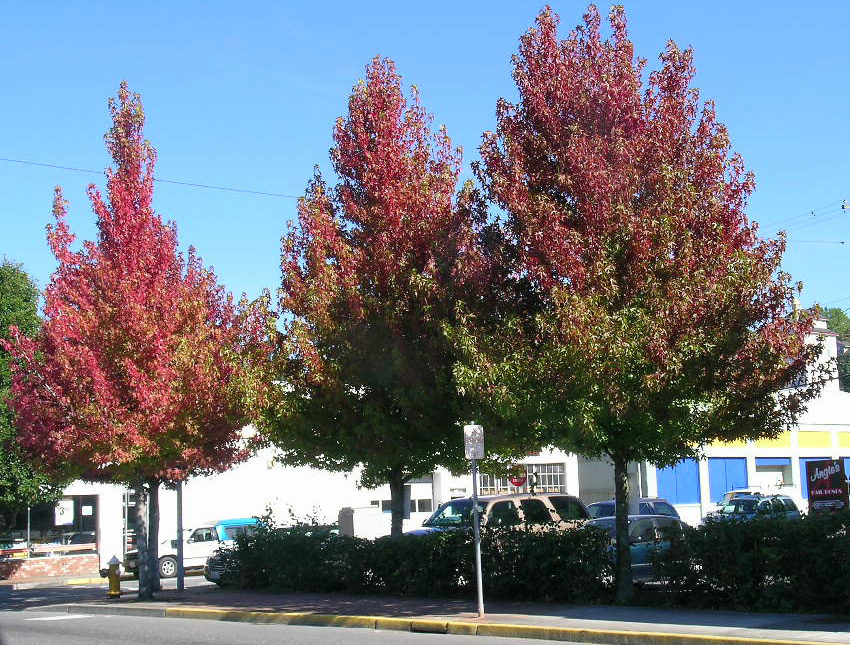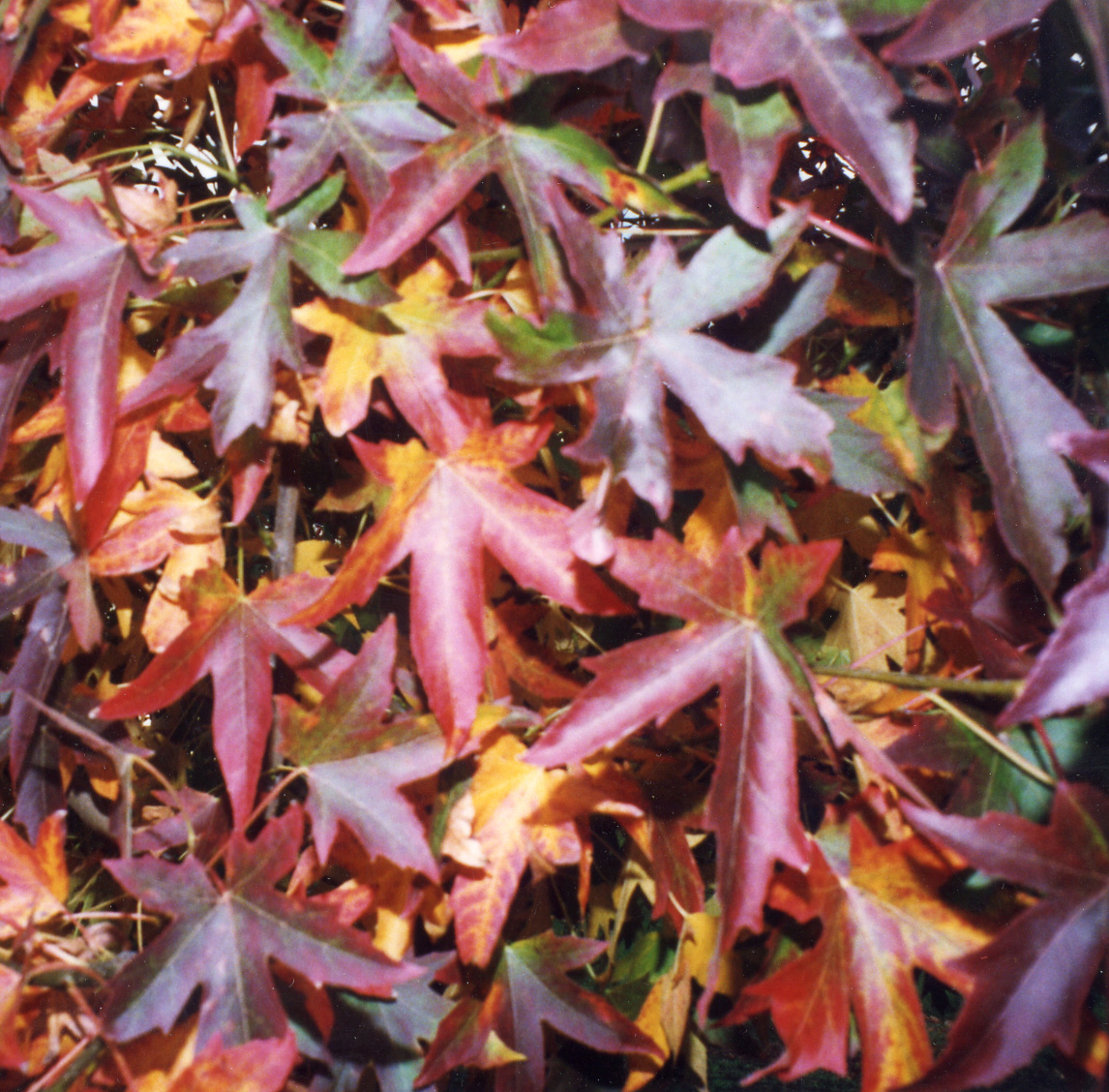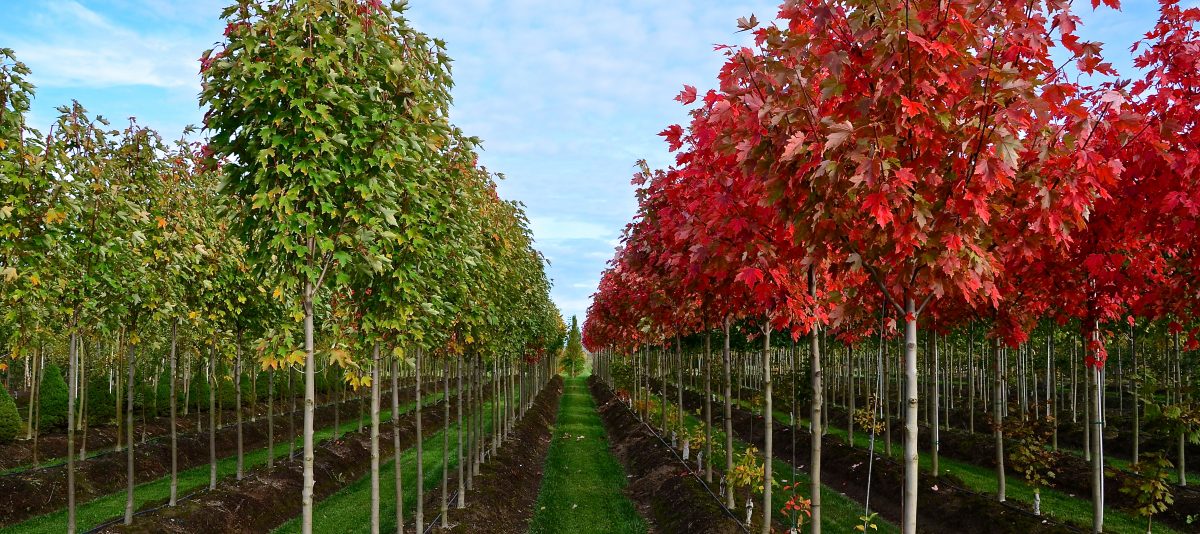Sweetgum
Liguidambar styraciflua
 We seem to have a love/hate relationship with the sweetgum. We love them for their fall color, interesting corky bark, and the fact that they seem to thrive in most soil conditions. We hate them because they fall apart from heavy snow and ice, especially if their structure is poor, heavy seed drop, and their aggressive shallow root systems. From my experience, their popularity seems to relate to how recently we have had a heavy snow or ice storm. Since they will most likely remain with us, a strategy for minimizing their problems seems appropriate.
We seem to have a love/hate relationship with the sweetgum. We love them for their fall color, interesting corky bark, and the fact that they seem to thrive in most soil conditions. We hate them because they fall apart from heavy snow and ice, especially if their structure is poor, heavy seed drop, and their aggressive shallow root systems. From my experience, their popularity seems to relate to how recently we have had a heavy snow or ice storm. Since they will most likely remain with us, a strategy for minimizing their problems seems appropriate.
First, always start with requesting a sweetgum cultivar, selected for their form, structure, color, or being seedless, depending on your priorities. Best color and form that I know of in the PNW appears to be the ‘Worplesdon’ variety. Fall color is rich, shiny dark purple, red, maroon to yellow, and the best sweetgum color I have seen. Seed is reported to be heavy at times; however, and the bark less corky. Branch angle appears appropriate and well spaced.
A somewhat narrow sweetgum is the Emerald Sentinel, Liguidambar styraciflua ‘Clydesform’. This narrow and compact form is reported to only get 12′ wide with a very dominant central leader and very upright branching. Color does not appear to be as spectacular as the Worplesdon, but I suspect there are seasonal and locational differences.
A relatively new and extremely narrow variety is the Slender Silhouette Sweetgum. With a mature form that may grow over 50′ tall and only about 6′ wide, this is about the narrowest tree I have seen, especially considering its height. These could be incredible in groups or next to a tall building, with very little crown space.

There are numerous other cultivars with specific attributes, one being the seedless ‘Rotundiloba’ variety. As the name implies, the leaf lobes are rounded rather than pointed.
The star shaped leaf, 3″-7″ broad, lobed, with five to seven divisions is common to most in the industry, so a lengthy description is unnecessary. The fruit is a dry spiky seedball that can be a nuisance for mowers and barefooters. Bark is gray, with green to brownish corky bumps and ridges, more on some specimens than others. The straight species can be irregular in form size, structure, and leaves, so be selective if you use this tree.
Avoid specimens with inclusions and double leaders. Prune to reduce end weight and poor structure. Always install rootbarriers if you plant close to sidewalks or curbs. Pray for early frost to speed up dormancy. Enjoy the incredible fall colors.
Please let me know your thoughts on this tree.
Jim Barborinas
ISA Certified Arborist #0135
ASCA Registered Consulting Arborist #356 CLICK HERE FOR MORE TREE PROFILES
Certified Tree Risk Assessor #PNW-0327
